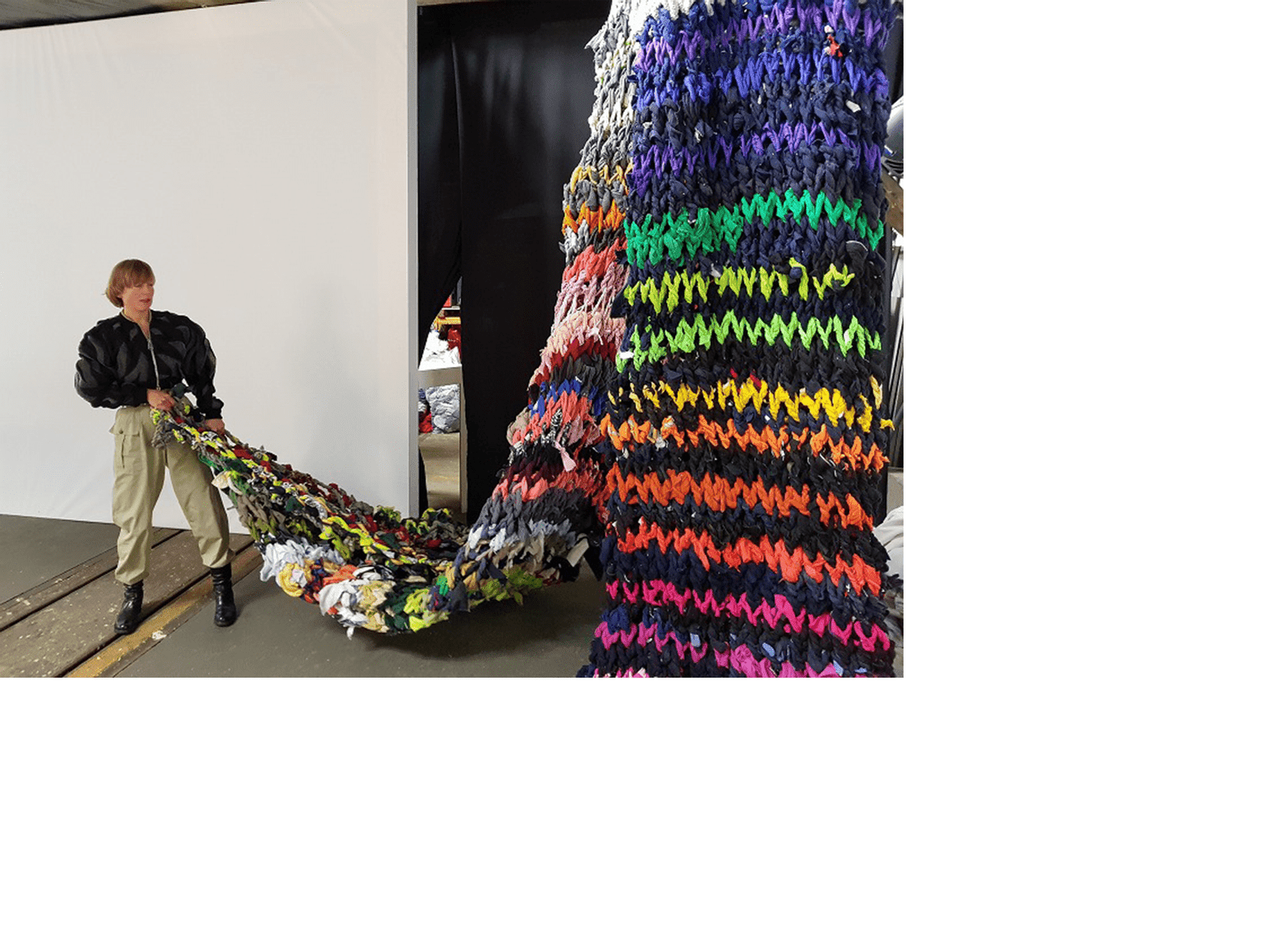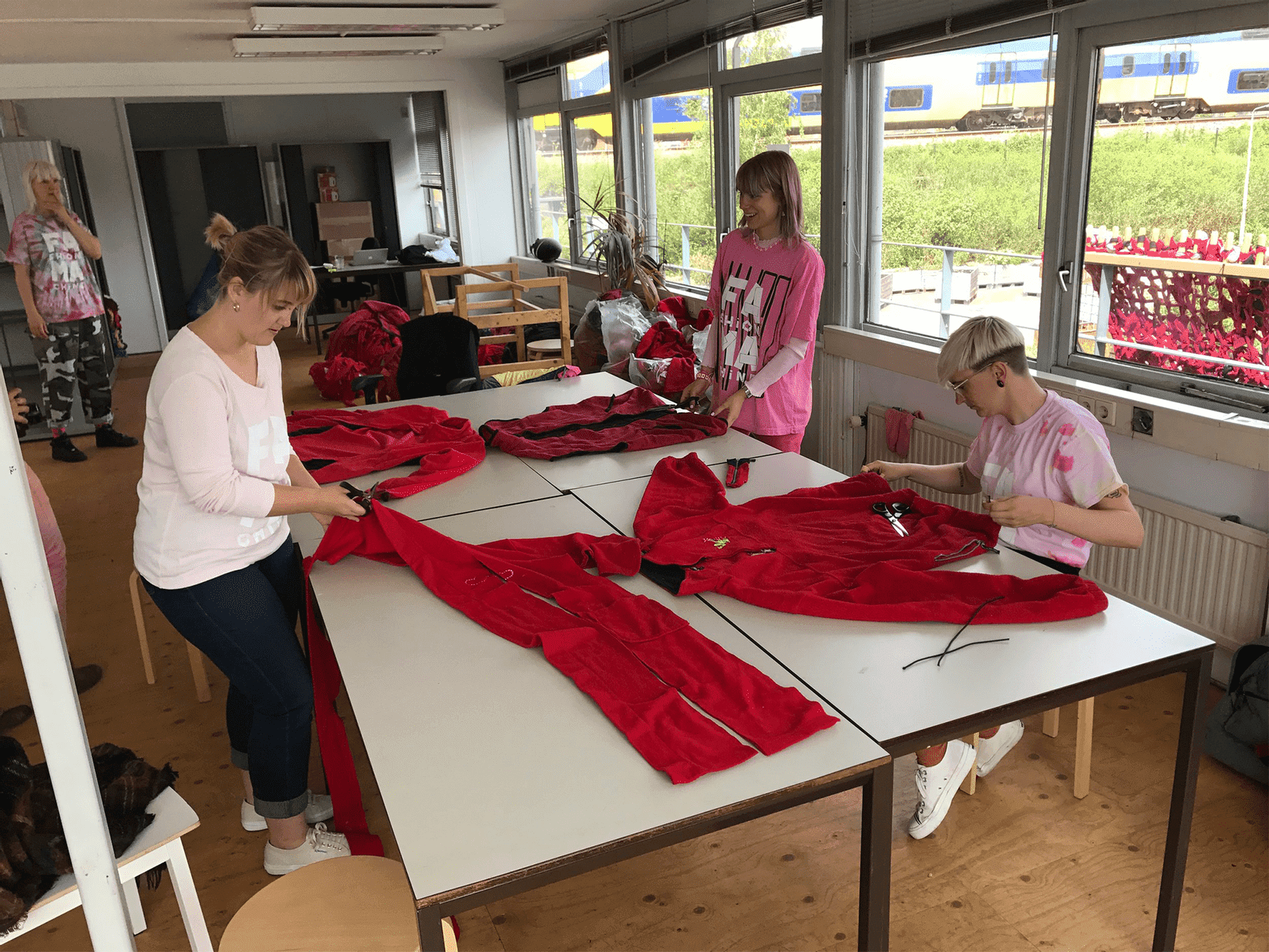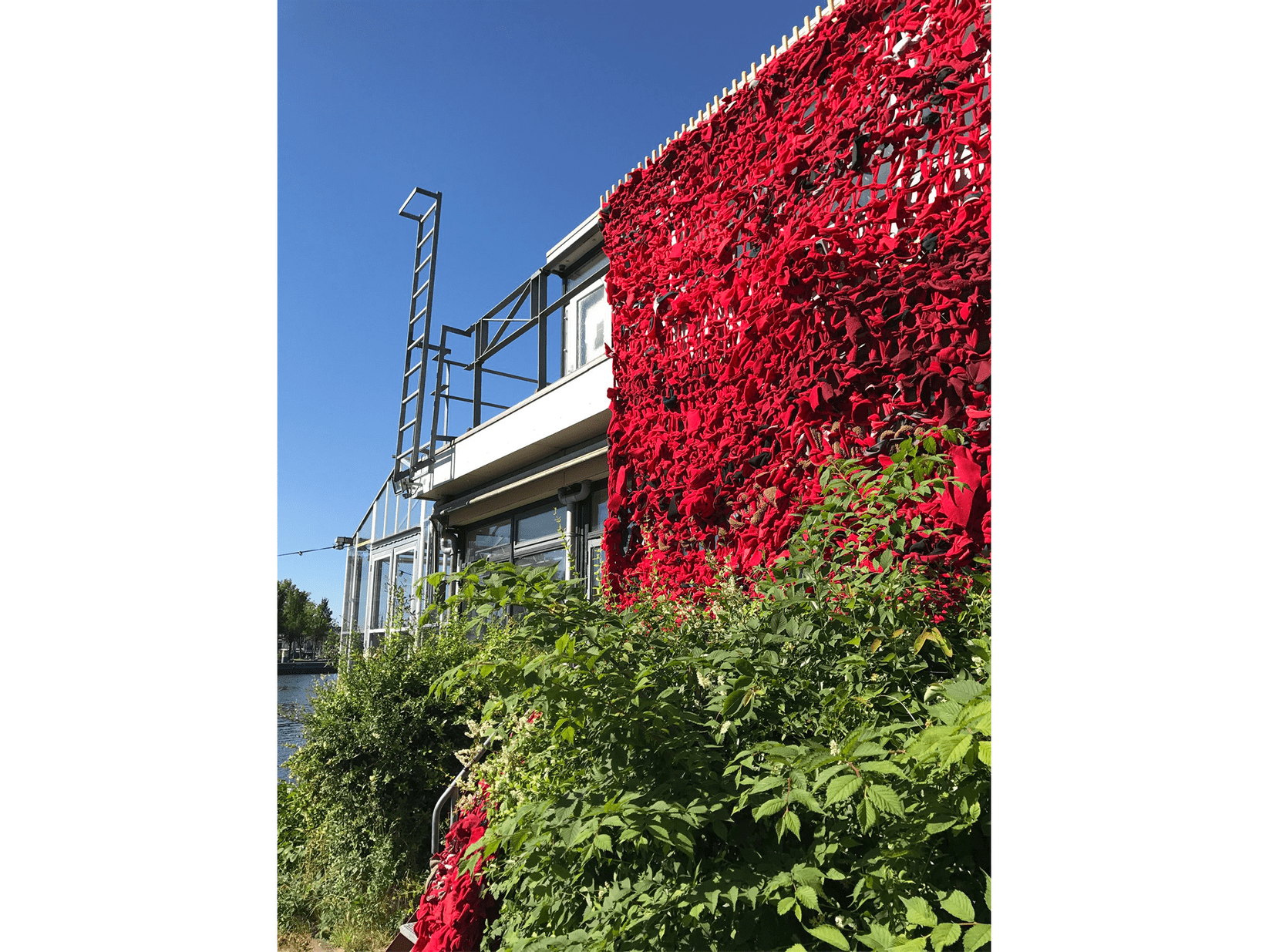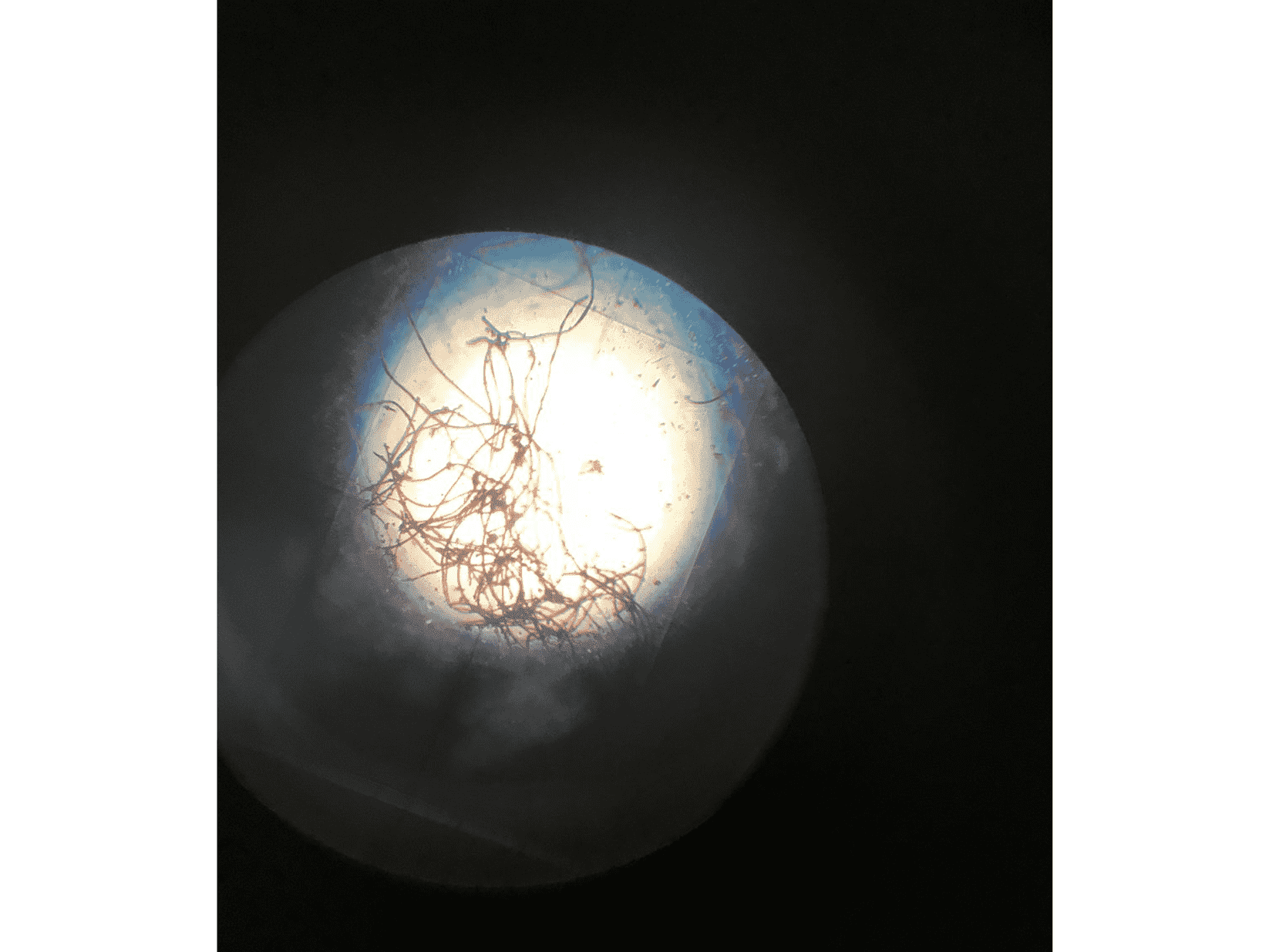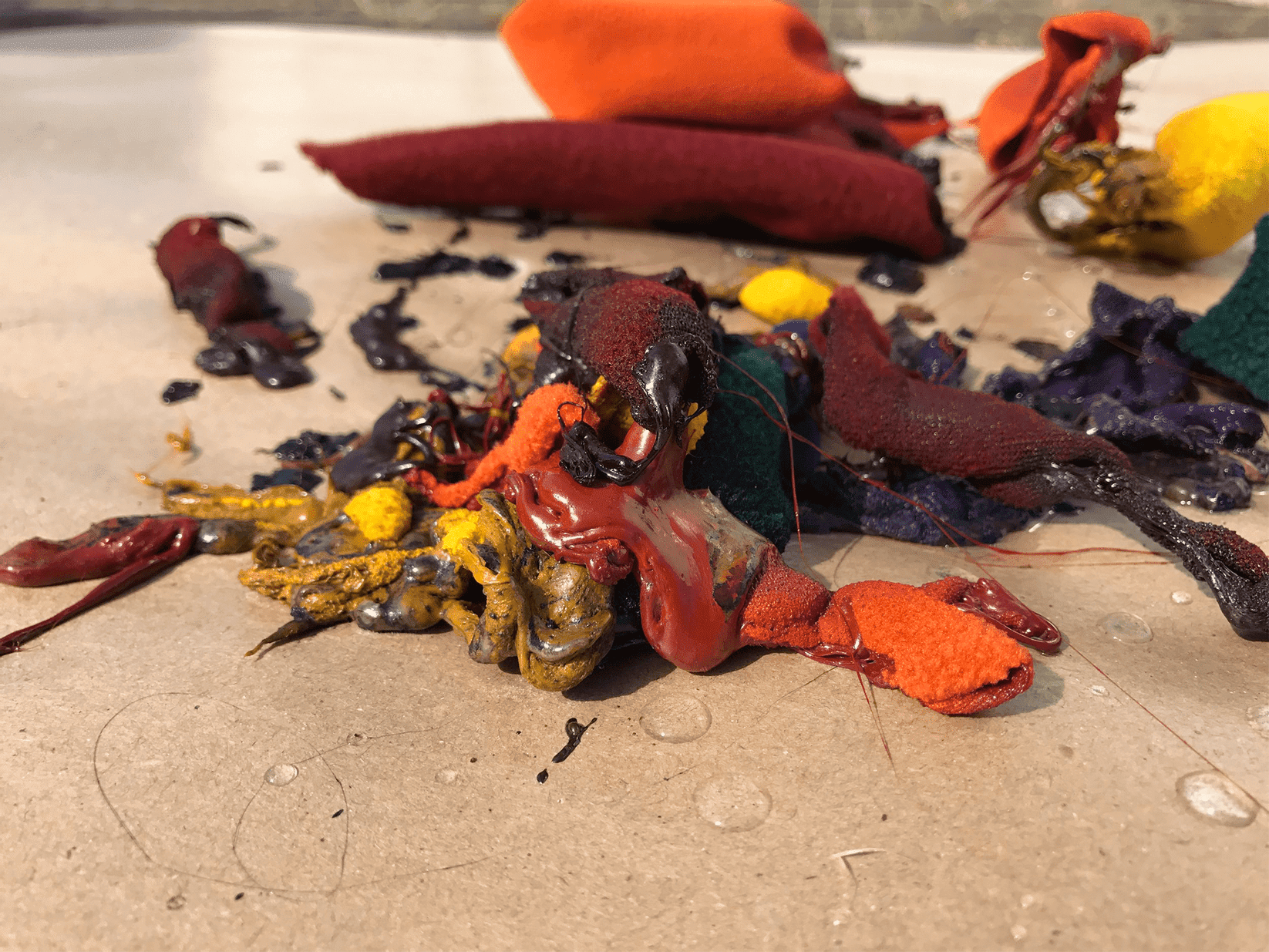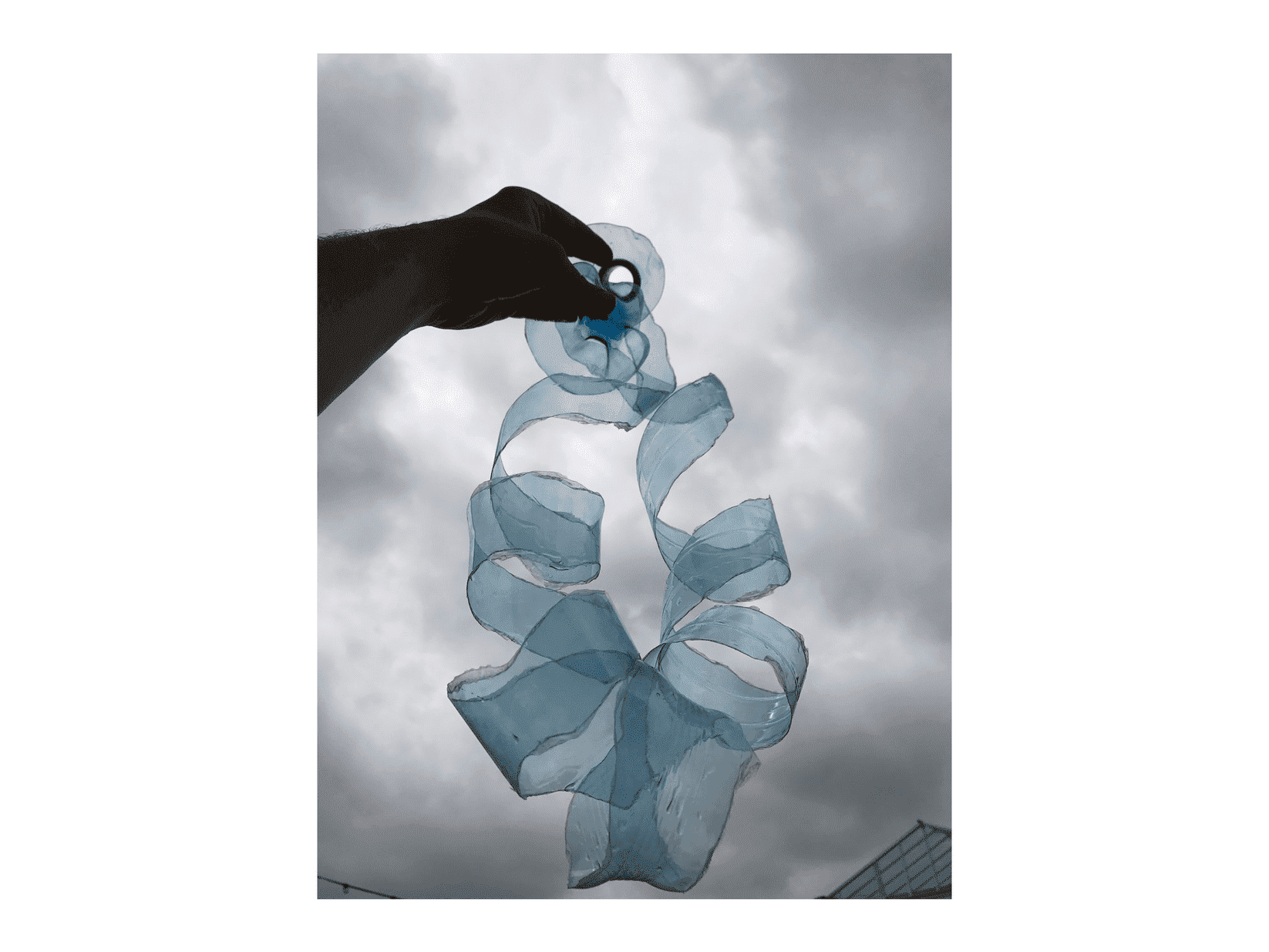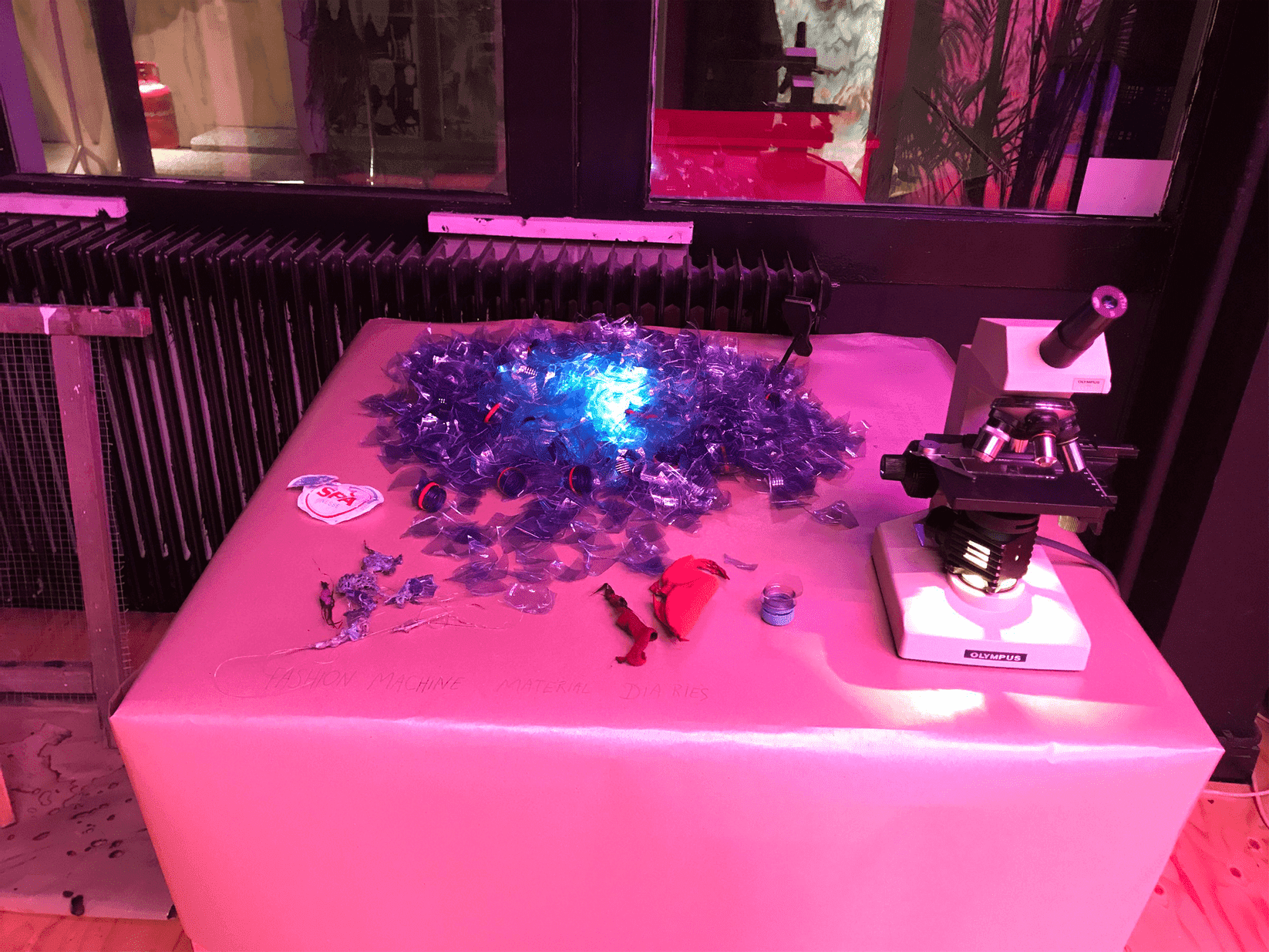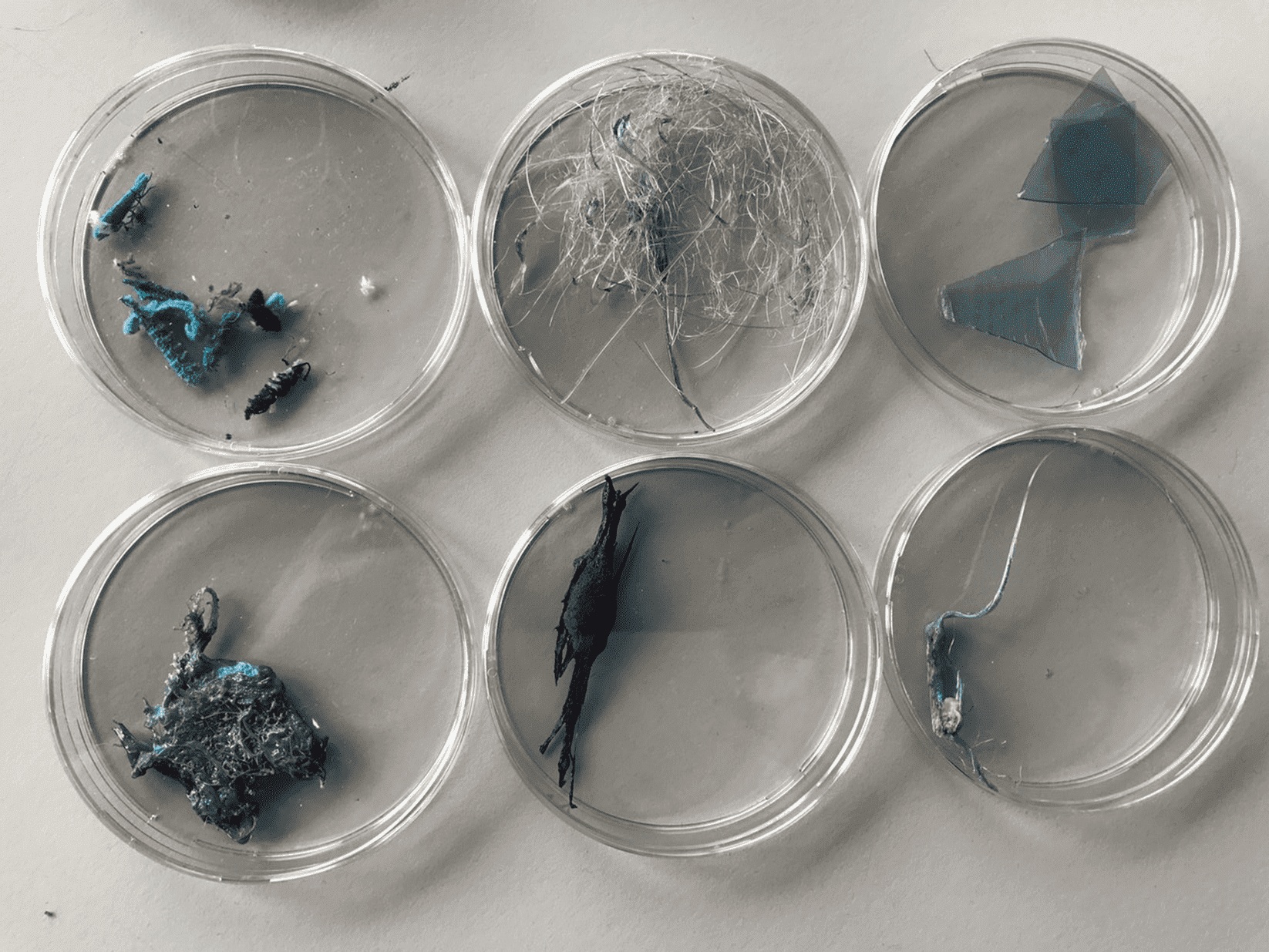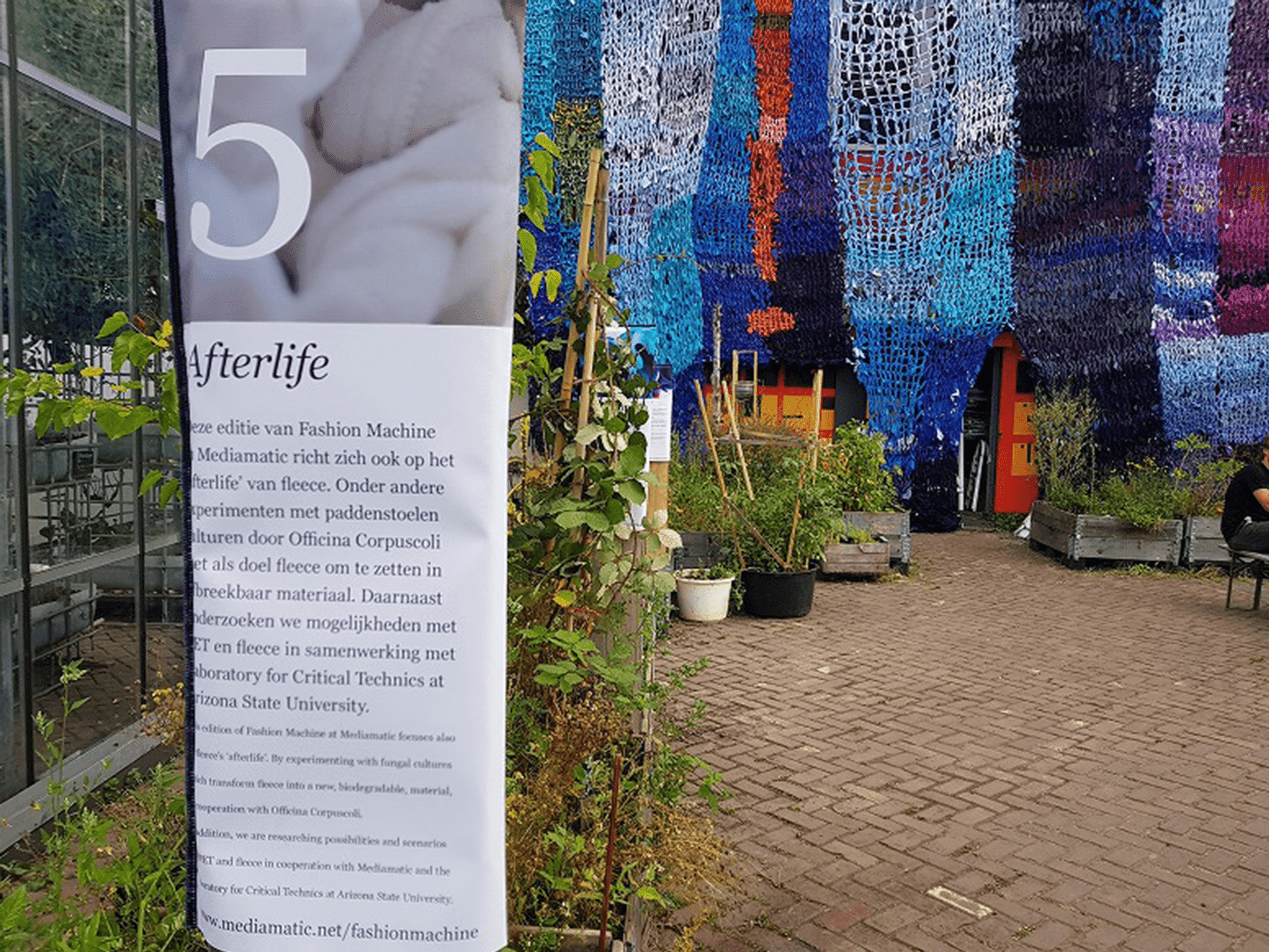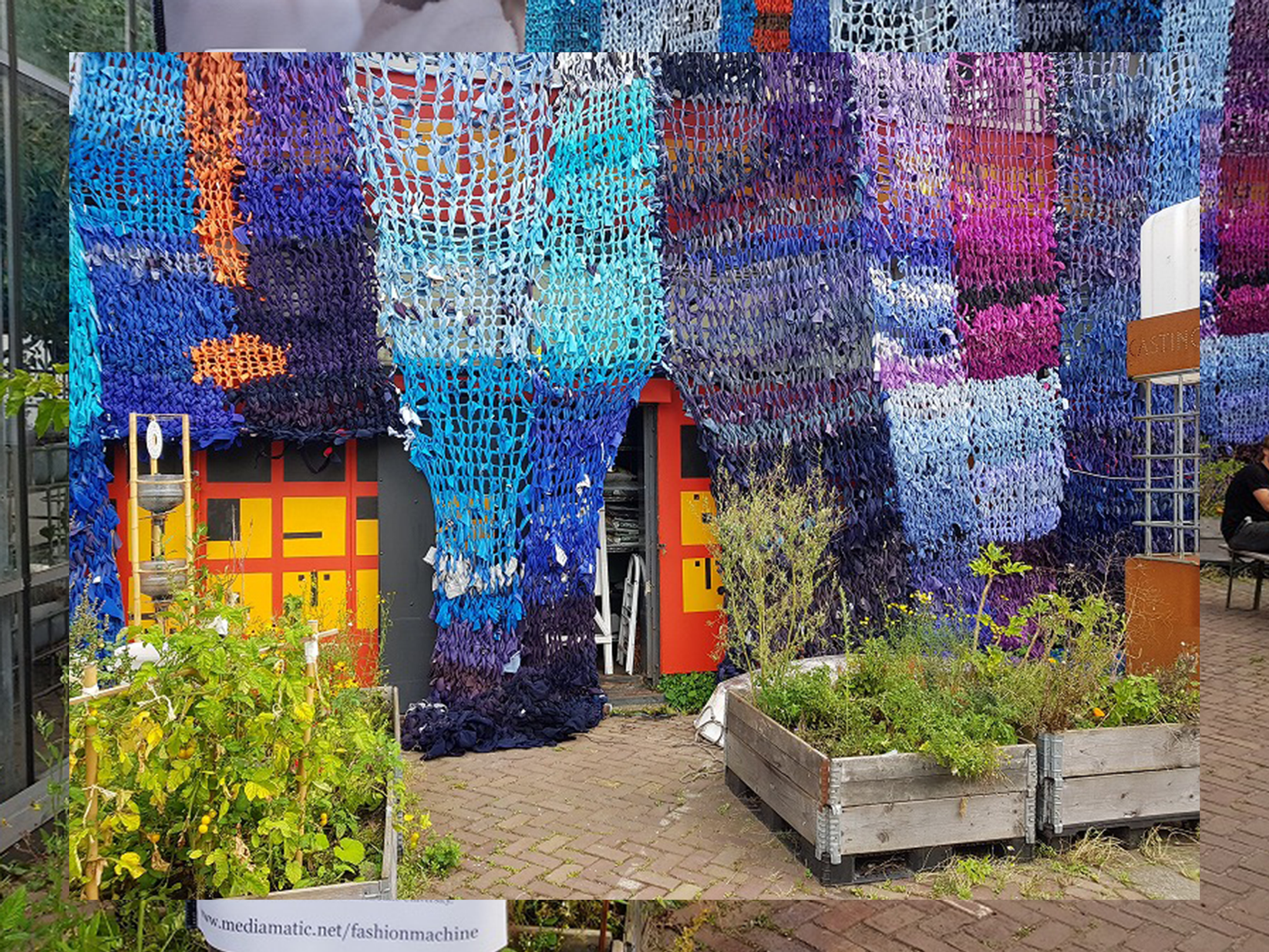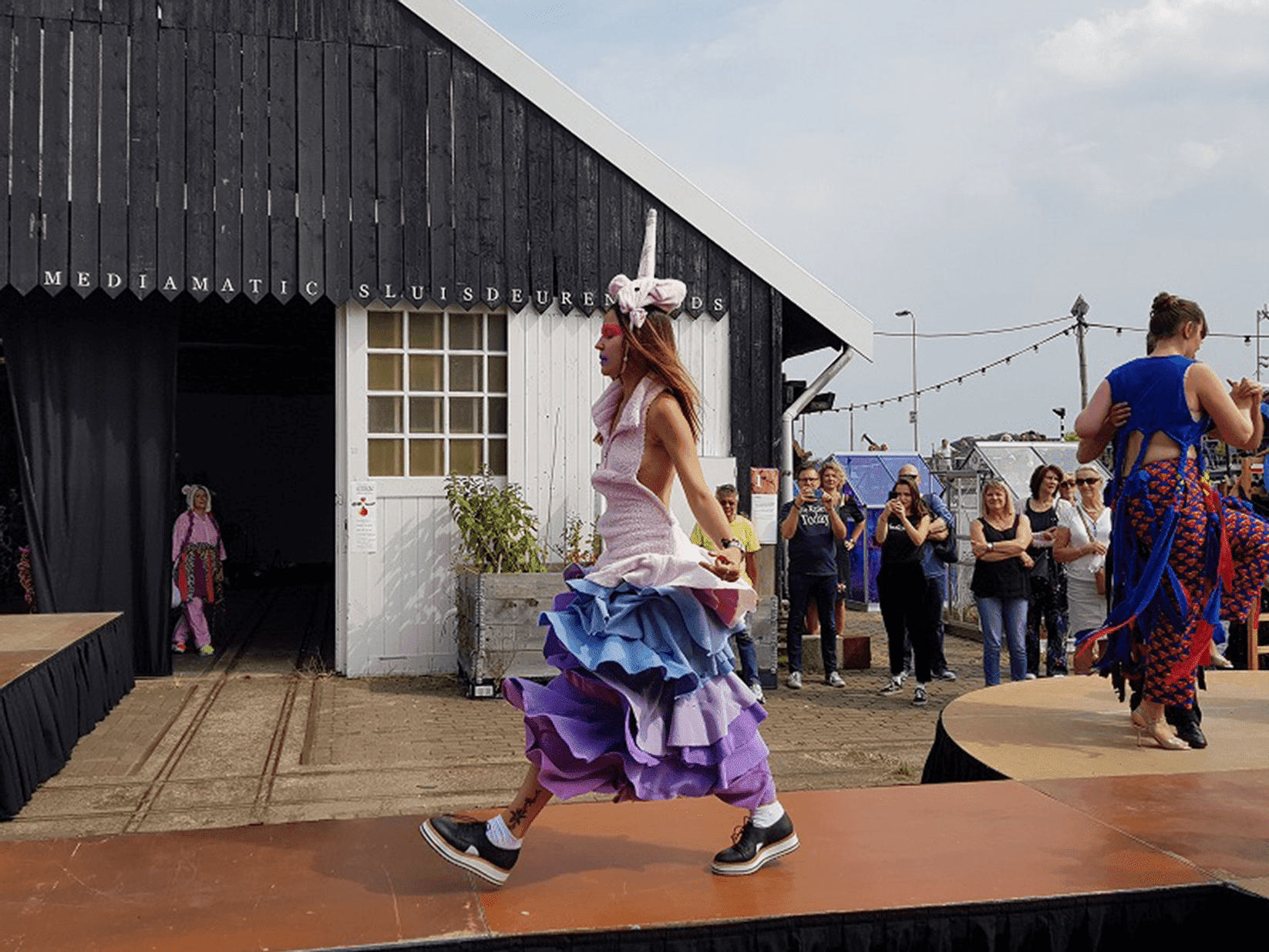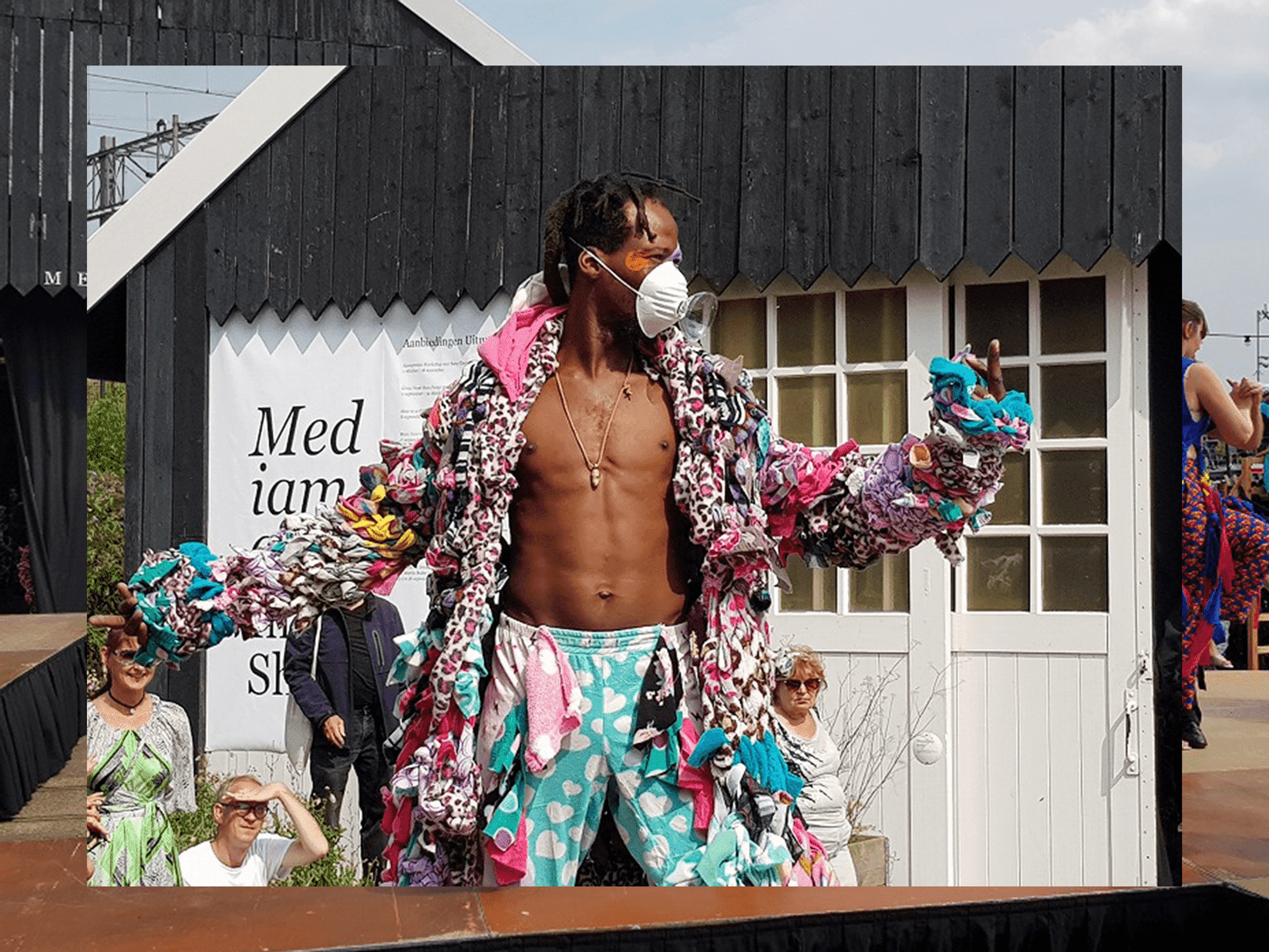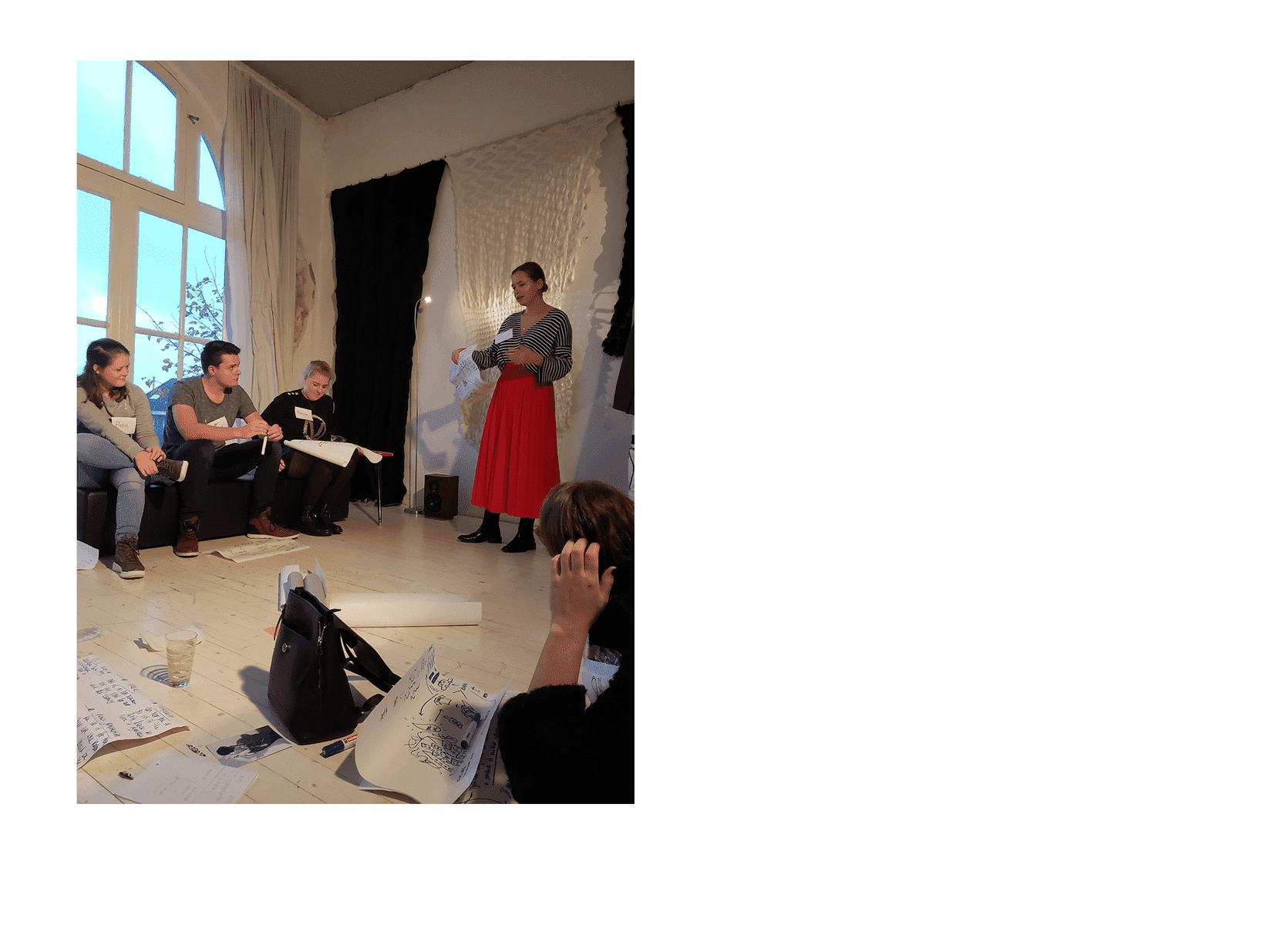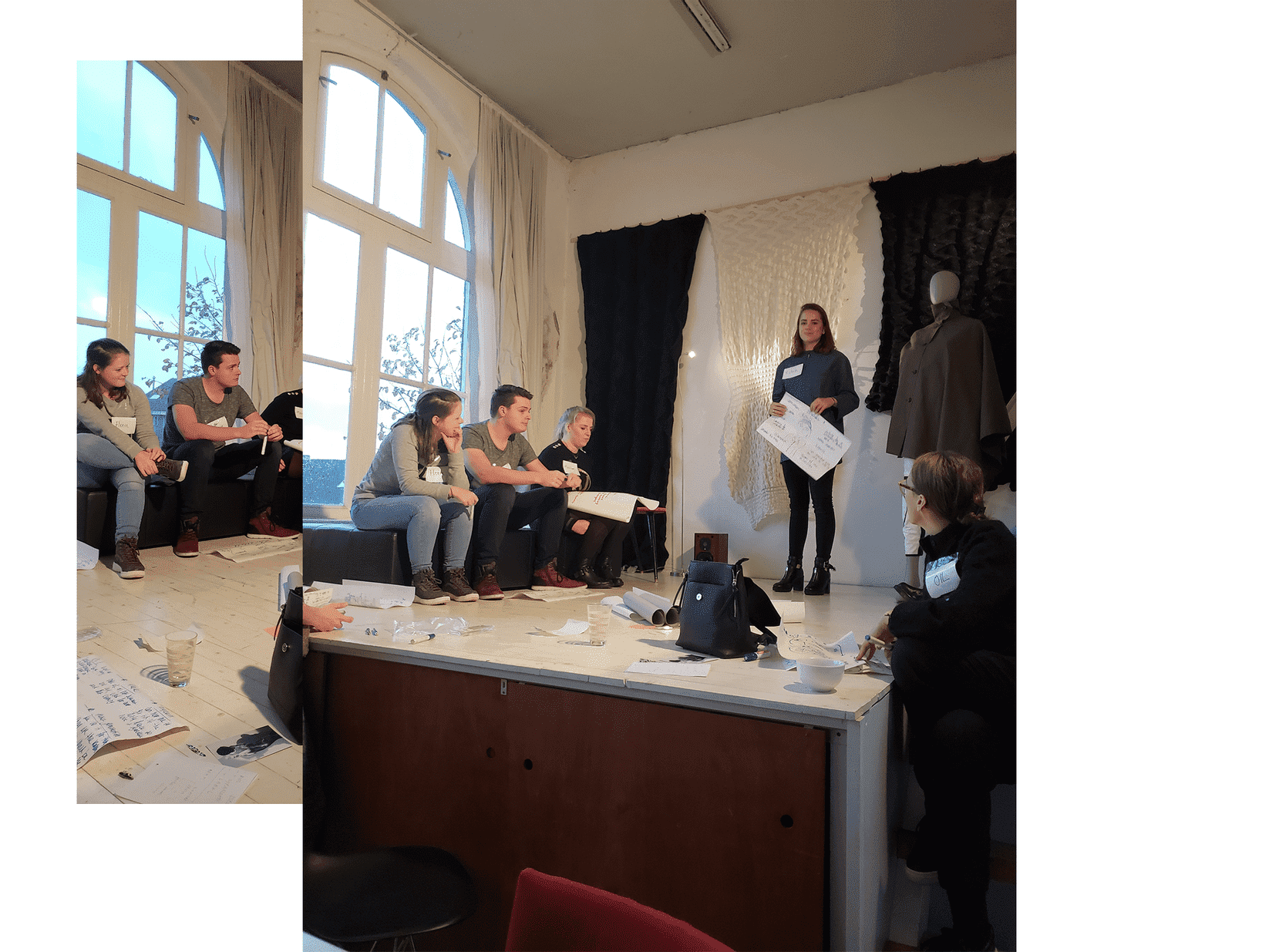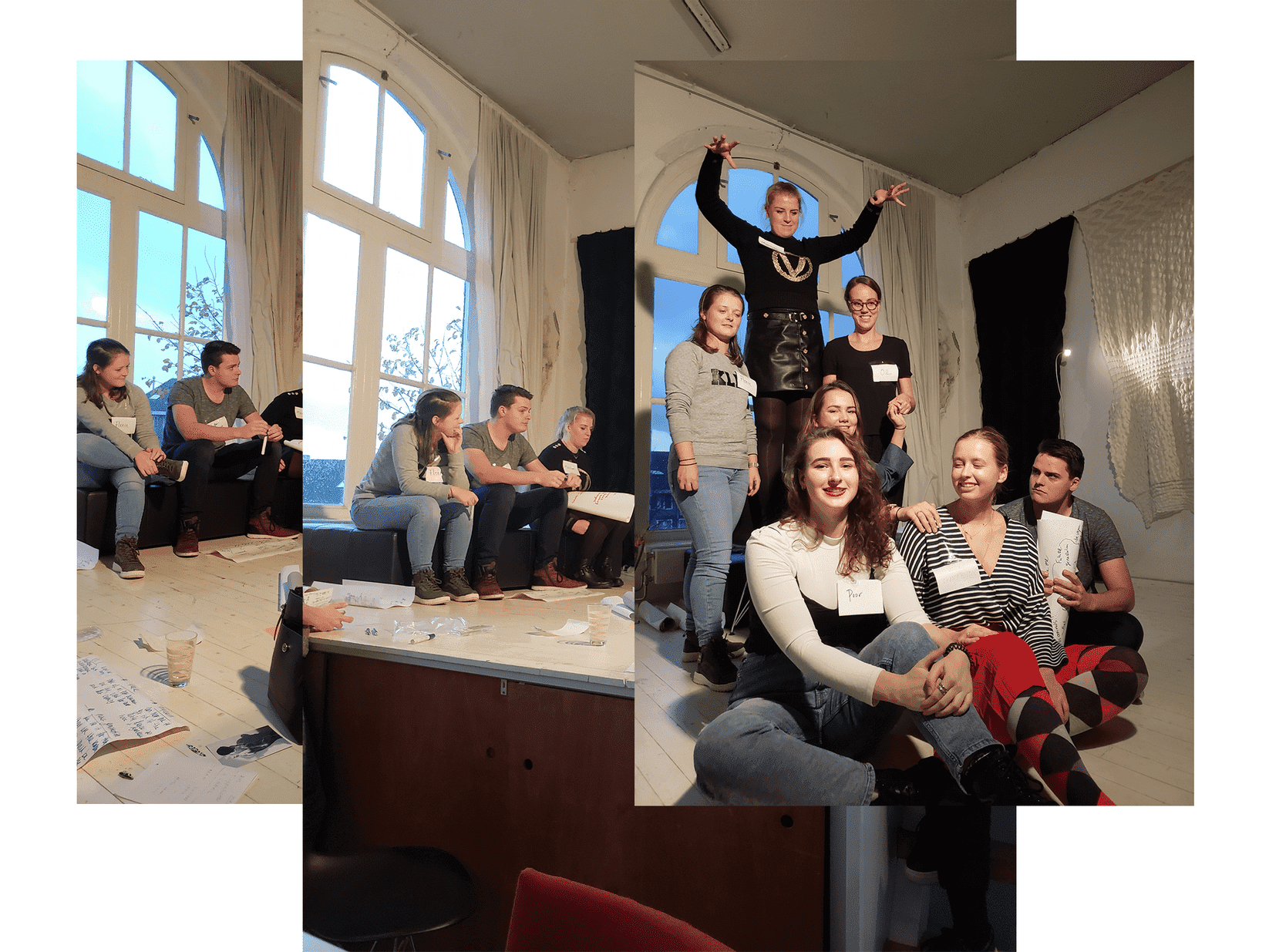Research Track
(Planetary (Technologies))))Conveners
Conny Groenewegen, Adam Nocek, Stacey Moran Nocek, Officina Corpuscoli, Mediamatic, Daan Rongen
Project
Fashion Machine
The fashion industry is a beautiful and polluting business. The fast pace of clothing production accounts for overwhelming amounts of material and immaterial consumption, global-labor exploitation and environmental pollution. Fashion Machine is an interactive installation and laboratory that intervenes in the lifecycle of the fast-fashion industry through one of its most characteristic leftovers: the fleece sweater.
This garment is enormously popular among outdoor lovers and has gained recognition as an up-cycled product made from PET bottles. However, the realities of fleece’s role in the fast-fashion industry are becoming shockingly apparent. Recent audits have shown that the supply chains of even the most “sustainable” producers of fleece are guilty of global human trafficking and forced labor. The afterlife of fleece is just as troubling. Research shows that fleece garments shed synthetic microfibers (an average of 1.7 grams per wash) that find their way into the Earth’s waterways and are having a detrimental effect on the health of marine and (now) human ecologies. And now, scientists confirm that 85% of shoreline debris comes from microfibers (Browne et al. 2011). Adding to the problem, fleece that is not consumed or repurposed in the Western world (it does not fare well in the second-hand industry, for instance) finds its way into landfills, incinerators, or it is shipped to the Global South where it is of little use. Fleece’s neglected lifecycle is having a devastating impact on living ecologies.
The researchers are engaged in a multi-stage design research project that gives concrete expression to fleece’s lifecycle and speculates about a new afterlife for the garment. The first stage of the project involves collecting an enormous quantity of unwanted fleece and then systematically cutting it into strips to create large balls of yarn. Mediamatic’s Panorama Studio functions as an urban “sweatshop” that makes fast fashion’s mechanisms of production tangible for the many volunteers and employees working on the project. The balls are fed into basic wooden knitting benches to produce monumental knitted flags draped over Mediamatic buildings. The dramatic scale of these garment flags brings the overproduction of this unsustainable material into sharp focus for both participants and viewers. In the second stage of the project, Conny Groenewegen and the CPT are collaborating with Officina Corpuscoli and other designers, scientists, and researchers to reimagine the afterlife of fleece. The project leverages the important work that Officina Corpuscoli has already done with white-rot fungus Phanerochaete chrysosporium to decompose plastic in order to take concrete steps toward decomposing this harmful synthetic garment.
In this way, the research team transforms the performative dimensions of the first stage of the project into sites in the urban science laboratories for experimentation on the future of fast fashion. Fashion Machine gives tangible expression to the lifecycle of fleece—from production to pollution—and then uses the urban laboratory as space for speculating about the new potentials for this garment. Ultimately, we envision many different afterlife scenarios, with different research teams working on different aspects of fleece afterlife in various urban contexts
(Upcoming events)
• Conny Groenewegen exhibits Fashion Machine: April 4 – June 24, 2019, Amsterdam Public Library Link
